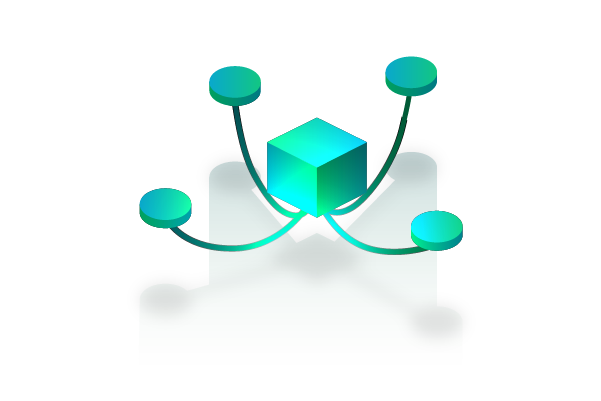Crypto nodes are the core of blockchain systems as they are responsible for data checking, defense, and democratic organization. It is also important to note that these node operators are part of the network and receive rewards for helping to stabilize the blockchain. Earning Passive Income from Crypto Node Rewards can help developers, these rewards, usually paid in the native cryptocurrency and can generate a continuous passive income stream. Due to the real-time updates of nodes and dynamic, maintaining awareness of the new node rewards can surely help to improve your investment plan.
The appeal of crypto node rewards lies in their dual benefits: building a strong and safe blockchain environment, and at the same time generating rather steady revenues. Over time, many of the node operators can devise ways and means of using the latest technologies and protocols in the blockchain environment to earn more rewards. Hence, you can ensure that your efforts are profitable and contributing to the continued development of decentralized financial systems If you align your efforts with the current trends and developments. Read more about it below.
What is Crypto Node Reward?

Crypto node reward is perks offered to anyone willing to run nodes in a blockchain system. Nodes are an important part of the blockchain that is able to confirm transactions, store the copy of the blockchain ledger, and help secure the blockchain.
This means that by running a node, the participants help to strengthen the blockchain since it is more distributed and therefore more reliable. For their efforts, these node operators are also compensated in the token of the network that is being used. These rewards are useful not only as an incentive and compensation for their work but also help to attract more people to participate and contribute to the network.
Based on the ideas of decentralized consensus nodes, the idea of crypto node rewards has been developed. In contrast, the several blockchains apply various consensus algorithms, including Proof of Work (PoW), Proof of Stake (PoS), and Delegated Proof of Stake (DPoS), with different approaches to reward distribution.
For example, in a Proof of Stake system, node operators, or validators are chosen according to how much cryptocurrency they own to create new blocks and verify transactions. The more they invest the likelihood of them being selected so that they can receive these rewards, increases. The validators also have the clear self-interest to keep the network healthy and safe from malicious attacks or fraudulent activities.
The feature of rewards in node crypto that makes it rather special is the real-time generation of profits and this is an offer that many individuals can never resist. In many cases, blockchain will display the real-time status of the current network, including node accomplishment and reward status, so that the operator can evaluate its performance and make adjustments accordingly.
It is a form of decentralization that allows node operators to make real-time decisions in response to changes in the network, like fluctuations in transactions or adaptations in the consensus parameters. The operators would thus need to remain informed and flexible so that they are able to extract as much value as possible out of their involvement in the network.
In addition, the main characteristic of crypto node rewards is that they are passive income sources that still serve an important purpose in the larger process of decentralization. Unlike traditional investment assets, node rewards in crypto mean that there will be no need for reinforcing the power of central institutions and the stock market.
This decentralized system not only brings savings of money but also adheres to the principles of blockchain, making it open to everyone, safe, and providing high security. This means that as the domain and application of blockchain technologies become more diverse overtime, so too will the potential for earning node rewards continue to ensure that the individuals and entities willing to invest time and resources into supporting them are adequately incentivized to do so.
Types of Crypto Nodes Rewards

Cryptocurrency nodes have the distribution and structure of these rewards different based on the consensus mechanism of the given blockchain, providing both opportunities and obstacles to node participants. Here are Type of Crypto Nodes Rewards:
Proof of Work (PoW) Node Rewards
In a Proof of Work (PoW) system, the nodes are also called miners. These miners are involved in a race to solve mathematical problems that confirm transactions and create new blocks in the blockchain. The first miner who can solve the problem and add the block receives a specific amount of cryptocurrency called block reward.
Also, the miners are rewarded with transaction fees charged from the users for executing their transactions. Such a double incentive mechanism encourages miners to actively engage in the network to secure and maintain it. With the growth of the network and as the mining becomes more complex, the computational power and resources needed for mining get added and this makes Proof of Work nodes rewarding a challenging and resourceful process.
Updates in Proof of Work networks are always important for miners in order to gain the maximum results for their work. As mentioned earlier, mining pools, which are groups of miners who combine their hashing power with an aim of being rewarded, usually offer real-time statistics in terms of performance and hash rates and earnings. Since Proof of Work rewards are not static due to factors such as network difficulty and cryptocurrency market prices, such a system must be monitored and adapted in real-time, especially considering the competitive nature of mining.
Proof of Stake (PoS) Node Rewards
In a Proof of Stake (PoS) system, the validators that provide new blocks and act as witnesses for the transactions are chosen according to the amount of cryptocurrency that they have tied as a deposit in order to ensure that they behave appropriately. In the implementation of Proof of Stake, it differs from Proof of Work since it predominantly depends on the ownership and staking of the cryptocurrency.
Paid Validators get paid based on the quantity of stake and contribution made in the validation process. This reward structure is designed to incentivize active participation of validators on the network and keep their tokens locked up for the good of the network.Proof of Stake rewards are often received periodically, this stipend makes for a reliable and quite stable source of income for the validators participating in the network.
Also Read: Top 7 Different Types of Blockchain Nodes
Stakeholders and observers receive real-time data, which is an essential aspect of Proof of Stake networks since it informs validators about their staking performance and rewards. Most Proof of Stake networks present dashboards and applications where users can receive the status of the validators, their reward rate, and the conditions of the network in general.
This information is relevant for validators to keep track of staking efficiency, its use allows to define various parameters, such as staked amount or delegating stake to other validators. Real-time updates mean that validators can reap the most rewards out of their investments while supporting the security and decentralization of the SX network at the same time. These constant shuttles between participating in the network and rewarding systems make Proof of Stake node rewards appealing to long-term cryptocurrency holders.
Delegated Proof of Stake (DPoS) Node Rewards
Delegated Proof of Stake (DPoS) is an advancement on the Proof of Stake model that involves an assigned voting system whereby some stakeholders vote for witnesses or delegates to handle transactions and generate new blocks. These elected delegates are only required to sustain the network conditions and they get paid for these through transaction fees and block rewards.
Delegated Proof of Stake targets to improve work productivity and scalability of the network by eliminating the numerous validators and simplifying the consensus. The incentives provided as remuneration are in some cases used to reward the various stakeholders who voted for the delegates hence the creation of a positive and constructive relationship between the two. This system encourages the engaged participation in network governance and the choice of reliable and efficient delegates.
The real-time updates in Delegated Proof of Stake networks are a crucial aspect of the system that will benefit both the delegates and the voters. It is important for delegates to keep an eye on their performance and the rewards they are getting, time they spend working, and overall their status of the working place. While voters use real-time information to make decisions on which delegate to vote for, the candidate herself relies on real-time information to make decisions.
Most Delegated Proof of Stake networks feature detailed control panels that show statistics related to the working of the delegates, the overall condition of the network as well as the latest reward payouts. This transparency allows delegates to remain responsive to the voters and for any stakeholder to engage in the management as well as the improvement of the decentralized network. Realtime updates between the delegates and voters make Delegated Proof of Stake node rewards even more appealing and an exciting aspect in the blockchain networks.Masternode Rewards
Masternodes are special types of nodes in some blockchains networks where those nodes are paid for extra services apart from the validation of the transaction. Such services may range from immediate transaction processing, privacy, and decentralized autonomous organizations. However, in exchange for doing these higher-order operations, masternodes are given a cut from the block rewards and transaction fees.
A masternode is created by investing a large amount of the announced cryptocurrency to the network, where the invested amount is locked. This requirement ensures that masternode operators do have a direct interest in undertaking necessary actions for the health and stability of the network. The benefits of owning a masternode are potentially high since it can generate good income for the holder, especially those who can fulfill the technical and financial conditions set by the project.
It is essential for masternode operators to get the latest information about the status and effectiveness of masternodes so that they can get the most from their investment. Some of the networks have built-in stats and analytics, which display various operational parameters of masternodes and the networks in real-time. It is crucial for operators to understand what their masternodes are and comply altogether with the requirements of a particular blockchain network so that they can adopt upgrades or changes to their setup.
The fact that these updates occur in real-time enables operators to fix any problems that may hinder performance preventing the YFDG from ceasing to function as well as fixating on generating the highest possible reward. The primary characteristics of masternodes include operation of the advanced services, significant rewards to be received, or the real-time monitoring needed in order to maintain these nodes effectively all point to this position being specialized and rich at the same time.
How Crypto Node Rewards Work?

It is important to understand that the rewards for the nodes are a fundamental part of the blockchain as it promotes participation of individuals and other entities to support the given network. These rewards depend on the consensus model used by the blockchain in question, be it the Proof of Work, Proof of Stake, Delegated Proof of Stake, masternode systems among others.
The main motivation behind these rewards is to make certain that the participants, known as node operators or validators, are incentivized well enough for their efforts in maintaining the network’s stability, security, and functionality. First of all, they allow node operators to receive cryptocurrency rewards for their engagement in these networks while at the same time actively promoting decentralization and security of the blockchain.
For instance, in PoW systems such as Bitcoin, miners who control nodes vie to solve intricate computational puzzles. The miner who solves the puzzle first and succeeds at adding the new block to the chain gets paid a certain amount of the digital currency inherent in the system, the block reward. Thirdly, it is earning transaction fees from users whose transactions are incorporated in the block by the miners. This feature incentivises miners to add computing power and find better solutions faster than the rest so that they win twice. Real-time update is imperative to ongoing and near real-time analysis of hash rates, network difficulty and prices that the miners use in order to make informed decisions and achieve the best possible returns.
In PoS systems, nodes are selected to create blocks and confirm transactions depending on the quantities of cryptocurrencies they contributed towards commissioning. Validators who lock their tokens are chosen more likely to forge the block, and the more tokens staked, the higher the chances are. Similarly to miners, validators are incentivized so that their revenue corresponds to their stake and the ratio of their work on validating blocks.
This staking mechanism motivates validators to work as custodians of the network and maintain its health since their potential rewards depend on the amount of cryptocurrency they put into staking. Updates in PoS networks require real-time data in order to let validators track how well their stakes are performing and make changes to improve the staking strategy – in terms of the amounts they stake, or even the validators to which they delegate the stakes in order to ensure the latter compels the highest possible reward while enhancing the decentralized security of the network.
There are other interesting approaches to crypto node rewards implemented in Masternode systems. They also perform usual block validation and should also offer extra services such as instant messaging, increased anonymization, and decentralized decision-making. To open a masternode, an operator is required to hold a large amount of the network’s cryptocurrency as an infrastructure stake. In return, masternode operators are granted a percentage of the block incentives and the transactions conducted within every given block.
This is highly useful for masternode operators to be up to date on their masternodes performance, get updates on the parameters of their nose against the network and make any necessary adjustments on the fly. It also provides continuous feedback, and ensures that operators can earn as much as possible and continue to provide the superior services within the network; meaning masternode operation can be highly specialized and potentially very rewarding in the cryptocurrency marketplace.
Why are Crypto Node Rewards Essential?

Rewards for crypto nodes are crucial as they constitute a strong positive reinforcement mechanism towards achieving the desired goal of the network: its security, efficiency, and decentralization. If these rewards were not provided, it would be difficult for individuals or entities to justify dedicating the time, effort and capital they contribute to help maintain this network.
Miners, validators, masternode operators are the node operators who are essential for verifying or approving transactions, protecting from malicious attacks on the chain, and managing an egalitarian blockchain. The values they earn do not merely cover up their costs but also make the parties interested in the long-term prosperity of the network, making it a sustainable system.
Moving away from the mere technological, crypto node rewards decentralize the monetary value of blockchain. It has become a way for people all over the world to take part in and share in the development of new distributed structures, no matter where they are in the world or what their station in society might be. This inclusivity ensures that there is a strong representation of node operators who are actively involved, contributing their ideas and assets into the network. As these participants earn rewards, they can easily become financially stable, support their families and augment investment back into their respective local economies, hence the promotion of general economic transformation.
Also Read: Top 6 Crypto Nodes to Earn Passive Income in 2024
Real-time updates and transparency in reward distribution are crucial for maintaining trust and engagement among node operators. By providing up-to-the-minute data on performance metrics, reward rates, and network conditions, blockchain networks empower node operators to make informed decisions and optimize their operations. This real-time feedback loop enhances the overall efficiency and security of the network, as operators can quickly adapt to changing conditions, address issues, and improve their performance. Transparency also fosters a sense of fairness and accountability, ensuring that rewards are distributed equitably based on each participant’s contributions and efforts.
On a human level, crypto node rewards offer a sense of purpose and community. Node operators are not just passive participants, they are active contributors to the success and sustainability of the network. By earning rewards, they receive tangible recognition for their hard work and dedication.
This acknowledgment fosters a strong sense of belonging and pride within the community, as operators know they are part of something larger than themselves. The camaraderie and shared mission among node operators create a supportive environment where participants can learn from each other, share best practices, and collaborate to overcome challenges, further strengthening the network and its potential for positive impact.
Conclusion
The idea of rewards to the crypto nodes is one of the fundamental aspects of the blockchain networks as it fosters participation, security, and decentralization of the blockchain networks. They offer significant motivation for node operators to contribute their effort and capital for sustaining and improving the network. These systems open up people’s opportunities to earn Passive Income from Crypto Node Rewards and can empower people all around the globe using capabilities of decentralized technologies. The presence of frequent updates and transparency is crucial in the operator’s interaction with the community to ensure that they are performing optimally.
From a personal point of view, the rewards serve as an acknowledgment of the contributions of node operators with a collective goal of developing the blockchain industry. Altogether, node operators have an essential role in the development of decentralized finance and technology behind blockchains, and therefore, crypto node rewards are crucial to the constant growth and development of the blockchain networks.
Disclaimer: The information provided by HeLa Labs in this article is intended for general informational purposes and does not reflect the company’s opinion. It is not intended as investment advice or a recommendation. Readers are strongly advised to conduct their own thorough research and consult with a qualified financial advisor before making any financial decisions.

Muhammad Ermanja
I am a blockchain technology expert specializing in decentralized systems, digital assets, and Web3 innovation. With over six years of experience in the blockchain and fintech ecosystem, I consistently explore and analyze the practical implementation of blockchain infrastructure, smart contract integration, and tokenization models for business transformation. My writings and insights emphasize research-driven perspectives and real-world case studies, aiming to help businesses, developers, and investors understand how blockchain can enhance transparency, security, and operational efficiency across industries.
- Muhammad Ermanja#molongui-disabled-link
- Muhammad Ermanja#molongui-disabled-link
- Muhammad Ermanja#molongui-disabled-link

